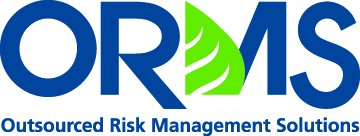CRE Mid-Year Checkpoint: Easing Interest Rates Fuel Cautious Optimism
SBA’s Latest SOP Reintroduces Clarity and Formalizes Lenders’ Role in the Environmental Review Process
May 9, 2025CRE Mid-Year Checkpoint: Easing Interest Rates Fuel Cautious Optimism
Commercial real estate (CRE) constitutes a massive and crucial market for lenders. CRE mortgage lending totaled nearly half a trillion dollars ($498 billion) in 2024, a jump of 16% over 2023 volume, and CRE borrowings currently make up roughly a quarter of all outstanding loans in the U.S. For community banks and credit unions, the ratio is even higher, with CRE accounting for nearly half of total loan portfolios.
Yet CRE lending has its share of risks. It’s been a volatile market over the past five years, buffeted by macro-economic and societal factors that have depleted occupancy, increased borrowing expense, and reduced property valuations.
At ORMS, we track major trends in the CRE market that can impact our clients’ loan portfolios. In this article, we take a mid-year checkpoint of the good, the bad, and the ugly in commercial real estate.
Lower interest rates and a refinancing boom around the corner
For lenders, interest rates are always top of mind. Unfortunately, the story through the first half of 2025 has been one of status quo.
The Federal Reserve maintained its benchmark lending rate at a steady 4.25-4.50% through its August 7 meeting, although the central bank has signaled plans to drop rates before the end of 2025. This would be a welcome development, although a modest decline of 50 basis points would still prove challenging for borrowers with maturing loans. Many loans coming due were originated at sub-4.0% rates, while prevailing commercial borrowing rates now average in the range of 5.5% – 7.5%.
Speaking of refinances, U.S. lenders face upwards of $1 trillion in CRE mortgage maturities through the end of 2026. With property owners experiencing substantially lower valuations and higher interest rates, this will put significant pressure on their ability to refinance, potentially triggering a wave of defaults and accommodations.
For traditional commercial lenders, another challenge is the recent emergence of private credit and non-bank lenders. Such lenders are willing to accept higher LTVs, a factor that may increase systemic risk in the sector. According to Moody’s, these players can potentially capture 10% of the $8.9 trillion U.S. CRE market in the next 3-5 years.
Despite these headwinds, CRE lenders are feeling cautiously optimistic. The CBRE Lending Momentum Index saw a massive jump in Q1 2025, with sentiment increasing by 13% quarter over quarter and 90% over prior year. As of the second quarter, credit metrics have begun to stabilize, with big banks reporting lower charge-offs and reductions in allowances for loan losses.
As we continue through the second half of the year, bankers are eyeing increased deal flow and a slight easing in underwriting criteria.
A deeper look at key CRE sectors
Under the covers, the prognosis for CRE lending varies widely by specific sector. Here’s a deeper dive into four key CRE markets:
- Industrial and logistics: The industrial sector has seen dampened rental growth and higher vacancies over the past few quarters, with year-over-year rent growth of just 2.1%, the lowest in more than a decade. According to Cushman & Wakefield, lower demand should continue through the second half, despite strong underlying drivers like e-commerce and manufacturing growth.
- Office: Since COVID, no CRE sector has suffered as much as the office market, and this downslide continues. U.S. office valuations fell 11% in 2024, and values remain more than a third lower than 2019 levels. For the first time in a quarter century, more office buildings are being torn down than newly built, driven by high vacancy and declining functionality. Expect the office market to experience a slow, drawn-out recovery over the next couple of years.
- Multi-family: Multi-family residential is the largest single CRE lending sector, with $326 billion in total originations in 2024. It remains a bright spot in the commercial market, with low vacancy rates of 4% through the first half of 2025. Expect continued stability in the second half.
- Retail: The growth of discount retail, including dollar stores, has been a boon for the sector, and properties like grocery-anchored retail centers are experiencing high demand. At mid-year, property availability is at near record lows of 4.9%.
Tracking CRE trends to minimize portfolio risk
As the calendar turns to the second half of 2025 and into 2026, there are reasons for optimism. Fundamentals remain strong in multi-family and retail, and the office and industrial sectors appear poised for a gradual rebound. As always, key factors in the coming months include the health of the overall economy and the Fed’s moves on interest rates.
CRE is a dynamic, diverse lending sector, and it’s important to regularly track both broad and sector-specific trends to proactively address potential risks in your portfolio. For help with managing the ongoing uncertainty, don’t hesitate to reach out to your outsourced risk management experts at ORMS.
